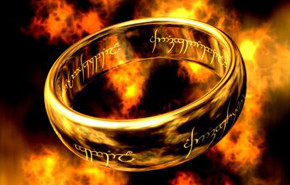 |
| It's not just bright. |
Humans discovered fire a long time ago, but for most of that time we only used it for warmth and light and cooking, rather as Bilbo Baggins used his magic ring for years just to avoid unwanted callers. Only in the 18th century did James Watt show up to play Gandalf, and reveal that our curious little trinket was the One Ring to rule them all. Fire has enormous power.
Even after centuries of technological progress since Watt, we still find it very hard to beat combustion as a source of power. Burning a tank of fuel releases enough energy to lift cargo all the way to the Moon, even with the horrible inefficiency of a rocket engine. Combustion provides energy, as one says, to burn. Why is fire such a tremendously greater power source than, say, clockwork springs or a windmill? I’ve never seen a clear answer to this question in any physics text, but I think I have found a succinct one of my own.
Fire glows.
 |
| Light oscillates really fast. |
The fact that fire glows demonstrates that fire is releasing energy from motions (of electrons in chemical bonds) with frequencies in the range of visible light. Those are very high frequencies, around 1014 cycles per second. As Planck taught us, energy is proportional to frequency. So if human energy needs are for motion at up to a few thousand RPMS, mere hundreds of cycles per second, combustion lets us tap energy resources on a scale greater by a factor of a million million. Combustion delivers so much energy, because molecular frequencies are so high.
 |
| This is what an engine somehow does. |
It isn’t easy to gear all that power down by a factor of 1012 so we can use it, though. Electrons whir around in molecules far too fast for our eyes to follow. We can’t just throw a harness over them. Even if we could, they are very light in weight. They bounce off things, rather than dragging them along. To tap them for power, we need some clever way of gently bleeding off their enormous but very rapidly whirring energy, a tiny bit at a time. There's more to it than just installing an awful lot of tiny gears.
Getting fire to do work means transferring power across a huge frequency range. That's what thermodynamics is all about. The reason that thermodynamics doesn’t seem very much like the rest of physics is that energy transfer across a huge frequency range is an extreme case, in which certain otherwise obscure aspects of physics become very important. That makes them important in general, though, because high frequencies can deliver so much power. It's well worth learning how thermodynamics really works.




No comments:
Post a Comment